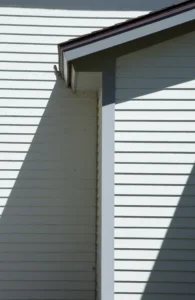Have you noticed any of the following problems around your home; high heating or cooling bills, needing to frequently paint your home, fading and chalking, or dry rot or mold? There could be a variety of reasons for these problems, but the likely and most common reason is that your siding is not working at its peak. As you continue to spend more time at home because of social distancing requirements, it is now more important than ever to ensure your home is running as efficiently as possible. One of the most important contributors to an energy efficient and comfortable home is siding. In this article, you will discover some of the signs your siding needs to be replaced.
Cracked or Lose Siding
Perhaps one of the most obvious signs your siding needs to be replaced is if you notice it is cracked or loose. If it is just one or two boards, however, you probably do not have to be too worried. Most people can easily remove two pieces of siding and replace them. The big problem is if there are larger sections of your siding that is cracked, or if there are multiple loose pieces of siding. If you notice this, it is a good time to call in a professional to assess the damage and fix it. The issue with not removing cracked, broken or loose siding is that water may seep in behind those pieces and cause major structural problems down the road.
Holes in Your Siding
Another tell-tale sign you are having siding trouble is if there are holes in your siding. It does not matter if they are big or small, holes are often a sign you have a pest problem. While pests have gotten into your siding and will not cause any trouble alone, the holes they create may allow rain or snow to get in under your siding, which can be costly to repair.
Dry Rot
In the beginning stages, dry rot can be difficult to see. However, if you tap on your siding with the handle of a screwdriver, you may be able to spot a dry rot problem before it becomes visually noticeable. Dry rot starts underneath your siding and over time eats away at the main body of the siding, leaving the top layer of the siding intact (the very reason it is hard to spot). Siding that has dry rot should be replaced as soon as possible.
Visible Water Stains
If you notice discoloration or streaking on your siding, this could be a sign that water is entering your siding and affecting the inside of your home. If this is the case, the damaged siding will need to be replaced.
Higher Than Normal Energy Bills
If you have noticed your heating and cooling bills have increased over the months or years, this is often a sign your home needs new siding. This is trickier to diagnose by yourself, however, because it could be a sign of an issue with your home’s insulation. Badly performing siding combined with low grade wall insulation is often the cause of high energy bills. Have a look at your siding and if you notice any gaps, chances are this is where your hot and cold air is escaping, and it is time to seal those gaps or replace your siding as soon as possible.
You Are Frequently Painting Your Home
An unusual but often clear sign your siding is not performing at its peak is if you need to repaint your home every few years. Well performing siding should ideally keep its shape and color for at least 8 years, and usually longer. If your siding is chipping, peeling or cracking often, this is an obvious sign that it is past its prime and needs to be replaced.




